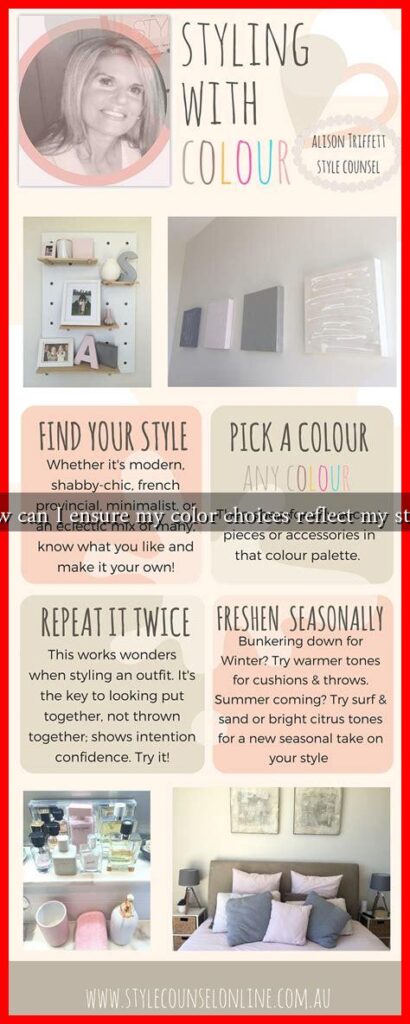-
Table of Contents
How Can I Ensure My Color Choices Reflect My Style?
Color is a powerful tool in expressing personal style, influencing mood, and creating an atmosphere. Whether you are decorating your home, choosing an outfit, or designing a brand, the colors you select can significantly impact how you are perceived and how you feel. This article will explore how to ensure your color choices reflect your unique style, providing practical tips, examples, and insights.
Understanding Color Psychology
Before diving into color selection, it’s essential to understand color psychology—the study of how colors affect perceptions and behaviors. Different colors evoke different emotions and associations:
- Red: Passion, energy, and urgency.
- Blue: Calmness, trust, and professionalism.
- Yellow: Happiness, optimism, and creativity.
- Green: Nature, growth, and tranquility.
- Purple: Luxury, wisdom, and spirituality.
By understanding these associations, you can choose colors that not only reflect your style but also convey the right message to others.
Identifying Your Personal Style
To ensure your color choices align with your style, start by identifying what that style is. Consider the following questions:
- What colors do you naturally gravitate towards?
- What colors make you feel confident and comfortable?
- Are there specific colors that resonate with your personality or lifestyle?
Creating a mood board can be an effective way to visualize your style. Collect images, fabrics, and color swatches that inspire you. This exercise can help clarify your preferences and guide your color choices.
Creating a Color Palette
Once you have a clear understanding of your style, the next step is to create a cohesive color palette. Here are some tips for developing a palette that reflects your style:
- Choose a Dominant Color: Select one color that will serve as the foundation of your palette. This color should resonate with your personal style and be versatile enough to use in various applications.
- Add Complementary Colors: Choose two to three complementary colors that enhance your dominant color. These should harmonize well and create visual interest.
- Incorporate Neutrals: Include neutral colors (like white, gray, or beige) to balance your palette. Neutrals can provide a backdrop that allows your chosen colors to shine.
For example, if your dominant color is navy blue, you might choose mustard yellow and soft gray as complementary colors, creating a sophisticated yet vibrant palette.
Testing Your Color Choices
Before fully committing to your color choices, it’s wise to test them in different contexts. Here are some methods to consider:
- Swatch Testing: Use paint swatches or fabric samples to see how colors look in your space or outfit. Lighting can significantly affect how colors appear.
- Digital Tools: Utilize online tools like Adobe Color or Canva’s color palette generator to visualize your palette in various designs.
- Seek Feedback: Share your color choices with friends or family to get their impressions. Sometimes, an outside perspective can provide valuable insights.
Staying True to Yourself
Ultimately, the most important aspect of color selection is authenticity. Trends come and go, but your personal style should remain consistent with who you are. Don’t be afraid to break the rules and choose colors that resonate with you, even if they are unconventional.
For instance, if you love bold, bright colors but feel pressured to conform to a minimalist aesthetic, embrace your vibrant side! Your style should be a reflection of your personality, not a replica of someone else’s.
Conclusion
In conclusion, ensuring your color choices reflect your style involves understanding color psychology, identifying your personal style, creating a cohesive color palette, testing your choices, and staying true to yourself. By following these steps, you can create a vibrant and authentic expression of your individuality through color. Remember, color is not just a visual element; it’s a powerful form of self-expression that can enhance your life in countless ways.
For more insights on color theory and personal style, consider visiting Color Psychology.


